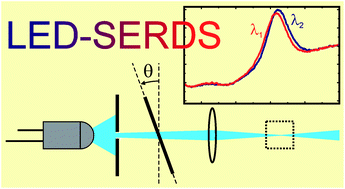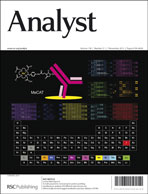Light-emitting diode based shifted-excitation Raman difference spectroscopy (LED-SERDS)
Abstract
Fluorescence interference is a common problem in Raman spectroscopy. A low-cost solution using shifted-excitation Raman difference spectroscopy (SERDS) with a light-emitting diode (LED) is presented. A conventional dielectric bandpass filter is employed to narrow the spectral bandwidth of the LED radiation and to stabilize its wavelength. Moreover, angle-tuning of the filter allows the wavelength to be controlled and shifted in order to record SERDS spectra.


 Please wait while we load your content...
Please wait while we load your content...